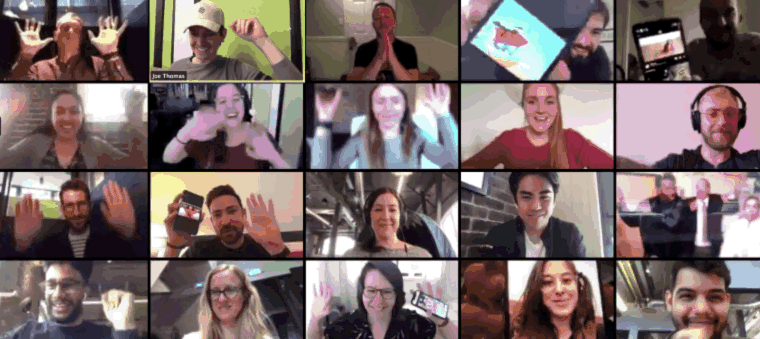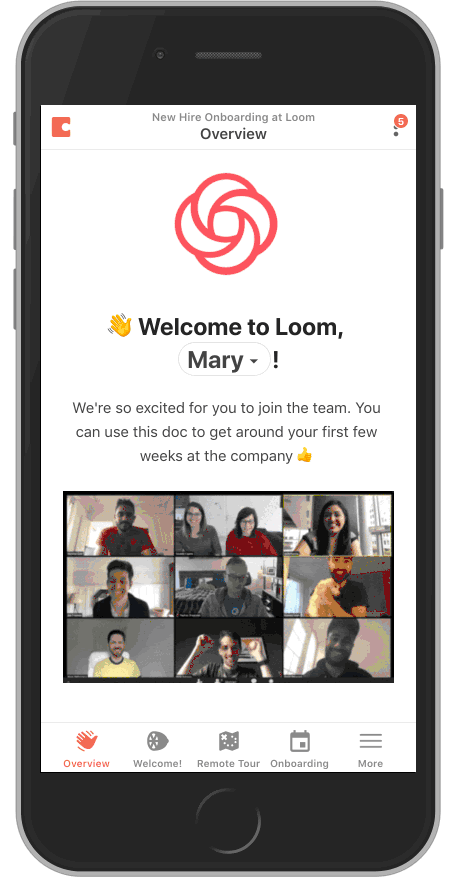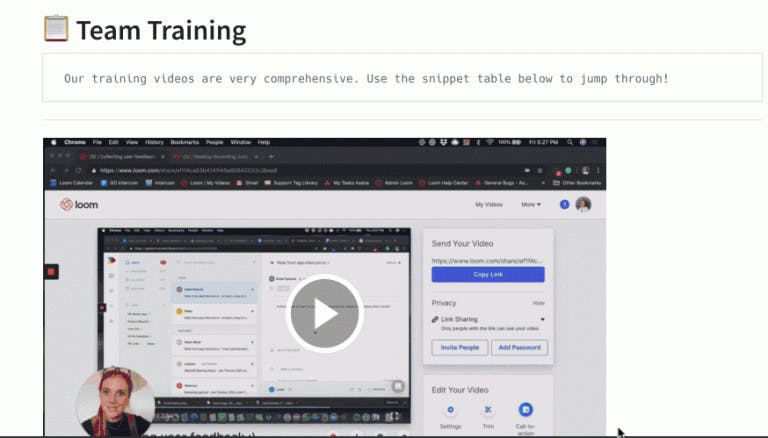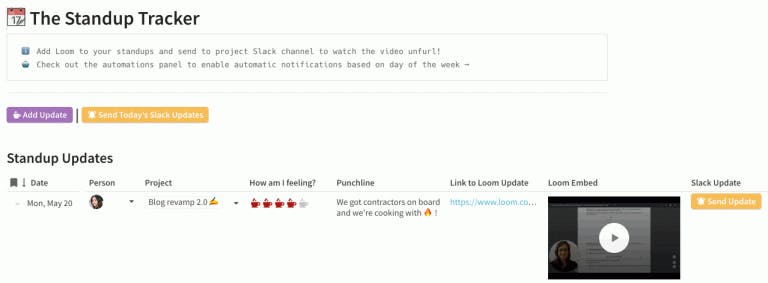Skip to content

 How Loom makes remote onboarding personal and scalable
How Loom makes remote onboarding personal and scalable
Best practices with Coda + Loom
Lauren Cunningham
The hunt for your next talented teammate is done! 🎉
They’ve signed the offer and you’re feeling good because all the hard work is now over, right? Well, it might not be time to put your feet up quite yet. Training your new hires is critical to ensure their success.
Over the past 3 months, we welcomed 11 new people to the Loom team and we’re incredibly proud to work with individuals located across 3 continents, 7 countries, and 14 cities.


But with such diversity in location comes the challenge of training and onboarding new teammates across multiple time zones.
Do they have all the resources they need? Do they know where to find answers to their questions? Are they getting the necessary support from their teammates? 😳
To help answer these questions, we’ve put together some best practices that have been working wonders for us using a new doc platform called
.
👋 Send Welcome Looms


Every time someone joins the Loom team, we send them personalised videos in a as a way to make them feel sincerely welcomed to the team.
We ask everyone that participated in the interview process to take a few minutes and record a one minute Loom video explaining why they are excited to work with the new team member.
The result is often receiving a video back from the new hire matching our level of excitement. And just like that, we’re off to a great start in this new relationship! 💞
🤓 Team Directory
When it comes to keeping everything organised, we like to keep an updated database of everyone who works at Loom so new members of the team can easily get to know their colleagues.
In there, you’ll find the usual standard information like everyone’s titles, department and contact information, which is helpful for new hires trying to figure out who does what on the team.


To add some more personality and make a regular table a little more fun, we also like to include some extra stuff, like personality test results (Myer-Briggs), our introduction videos (some people go all out) and even our .
🎥 Training Video Repository
Planning and documenting your team workflows with videos is an invaluable resource for any new hires. Watching a video walkthrough means that learning new information can still be personal even if we’re not together in the same room.
Investing time into creating evergreen training videos will not only ‘teach’, but give insight into the quirks and culture of your entire team.
Here at Loom, we to use so our new teammates can easily find and learn important information whenever they need to.
A great way to automate this process is to use a platform that allows written and video information to coexist in a visual way. Here at Loom, we do this by embedding our videos in this Coda .
Using Coda’s formulas with Loom’s , our new teammates can cut straight to the juicy bits. We like to think of it as a supercharged checklist, but with actionable key points and a snazzy option for gamified rewards.


Knowledge retention doesn’t always happen at the same pace for everyone on the team. With information documented in video, new hires won’t ever have to feel silly asking questions about an already covered topic as they can simply rewind and rewatch.
You only need to record one video which can be watched multiple times by multiple people.
Time is precious so spend it connecting with your new teammate on what’s important to them, not on how to report bugs for the Engineering team. 😉
📆 Track Meetings
Starting a new job can be overwhelming, especially if you’re joining a startup or company in hyper-growth where everything moves at a fast pace.
Couple that with an ever-increasing list of communication channels, and it can start to feel difficult to understand why decisions were made, or what progress has happened since your last stand up.
With Loom videos integrated with Coda’s , you can keep track of meeting updates in a video timeline that keeps the memory of past decisions alive.


You can even take it a step further and integrate popular communication tools like Slack to automatically send updates to your team. The sky’s the limit. 😇
Keeping Onboarding Personal & Scalable
Onboarding a new teammate doesn’t stop at week 1. In fact, the following weeks will be the most crucial for your new employee’s success.
We’ve learned that well-crafted onboarding and training documentation, with a nice dose of automation, will do wonders for your new teammate’s success.
Distributed teams who can’t be all together in the same office should still enjoy the same opportunities to create connection between teammates located around the world.
We’d love to hear from you too. How do you onboard your remote team? and tell us about it.😉
Want to print your doc?
This is not the way.
This is not the way.

Try clicking the ⋯ next to your doc name or using a keyboard shortcut (
CtrlP
) instead.